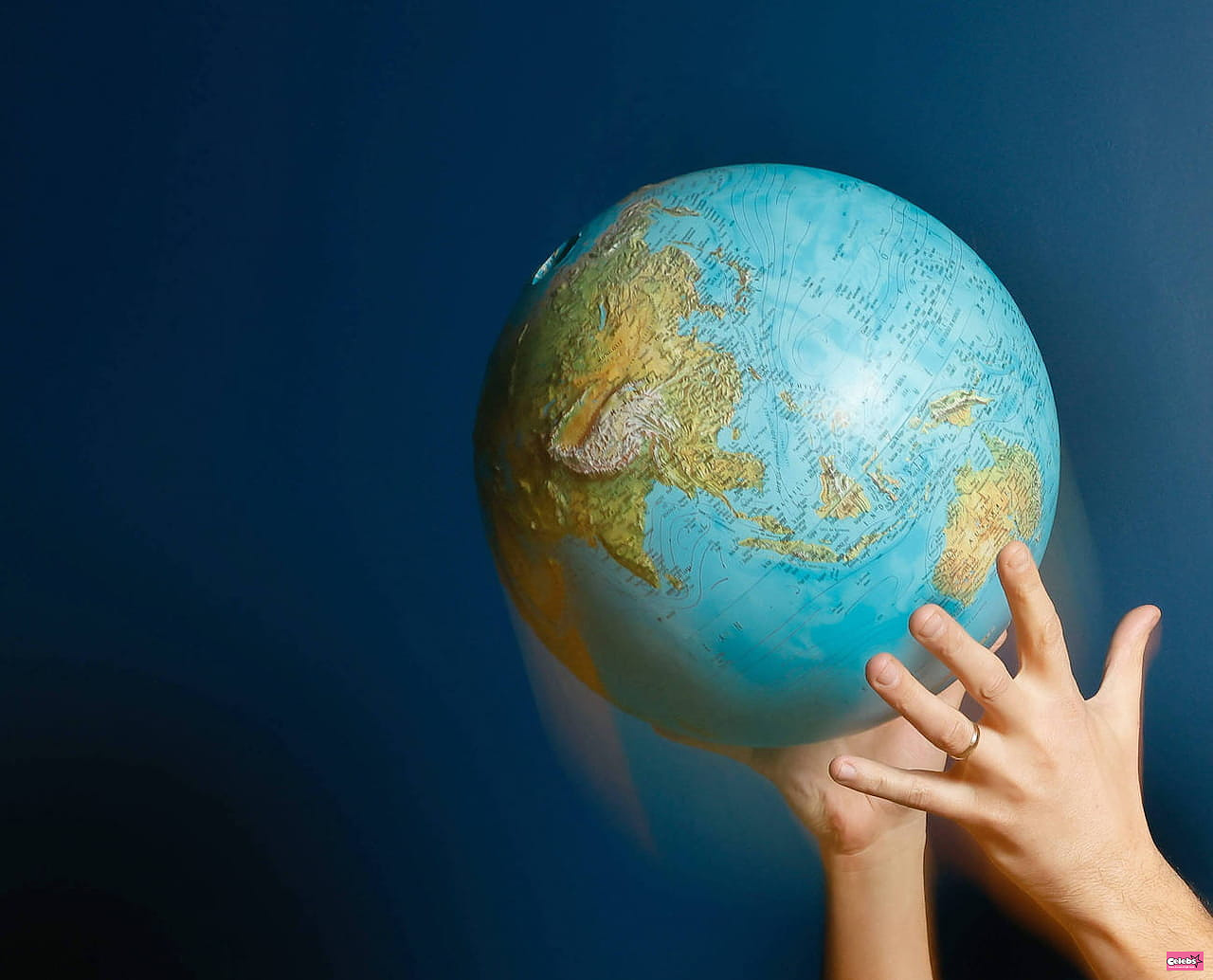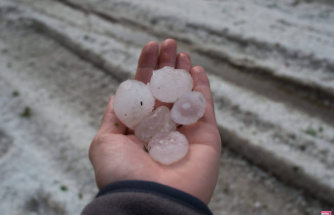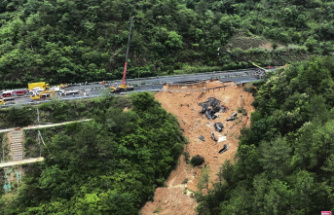Like every year, citizens of the blue planet celebrate Earth Day on April 22. An annual global event that raises awareness about the uniqueness of our planet, its richness and its biodiversity.
On Monday, the entire planet will get together to celebrate Earth Day. Like every year since 1970, April 22 is dedicated around the world to highlighting the uniqueness of our planet and raising awareness about the preservation of its incredible biodiversity. This global event, which now brings together nearly 190 countries and more than a billion people, is an opportunity to examine our ecological footprint and aims to support individuals and organizations in reducing their impact on the environment. As earthlings, we have a responsibility to preserve the Blue Planet, but modern lifestyles and increased consumption have a negative impact on our environment, including climate change and loss of biodiversity.
This day therefore reminds us of the importance of conserving biodiversity, which is essential to maintaining the ecological balance of our planet and our own well-being. It is also a privileged opportunity to act for the environment. As every step counts, there are many ways to do your part, including cleaning up waste, planting trees, using alternative modes of transport or reducing our energy consumption... It is also possible to contribute to biodiversity conservation by supporting organizations working in this area and educating others about the consequences of biodiversity loss.
Earth Day is an opportunity to connect with nature and recognize the beauty and importance of our planet. So why not take the time to take a walk in a local park, visit a botanical garden, or simply appreciate the nature around us?
Earth Day occurs every year on April 22, which is Monday, April 22, 2024.
Many activities are offered this weekend and the days following the event in cities across France. They can be found via this page of the French Earth Day website (just enter your location in “Your current location” to find the activities offered).
You can, for example, this Saturday, April 20, join the Aux Arbres Citoyens association for a "clean up" of the rue de Bazeilles, in Paris or to paint a fresco on the climate at the Le Moulin space, from 10 o'clock. Monday April 22, the Franco-German center in Burgundy-Franche-Comté of Dijon invites the curious to a march for the climate. The kilometers traveled will be transformed into donations for the reforestation of a forest located in the Franco-German border region. Or, on Saturday April 27, the Manger Végétalien association invites Parisians to a tasting, Place Joachim du Bellay, in Paris, throughout the day.
Coordinated by the Earth Day Network, Earth Day is about appreciating the uniqueness of our planet Earth with its incredible biodiversity. According to the UN on its official website, the DNA of "International Mother Earth Day" is more precisely to raise awareness of the challenges facing our planet, based on the idea that the Earth and its ecosystems are what nourishes us and supports our steps throughout life. In short, our only home. During this day, various national and international activities are carried out to understand biodiversity and how to protect our nature, plants, animals and the environment as a whole. Some of the actions carried out consist of encouraging the purchase of more ecological products, reducing waste, recycling and reuse, or even promoting the fight against climate change. Earth Day Network, the organization behind the movement, works with more than 22,000 partners around the world. Today, more than a billion people participate in World Earth Day activities each year, making it one of the largest global events.
Earth Day is a holiday celebrated in the United States since 1970, always on April 22, to commemorate the creation of the environmentalist movement by a Wisconsin senator, Gaylord Nelson. So 47 years ago, the latter organized a major demonstration for the environment and to demand its consideration in American federal policies. This parade led to the adoption of several founding laws such as those on the protection of air, water and endangered species, as well as the creation of the Environmental Protection Agency (EPA) .
Taken up by the United Nations as a key date in the calendar since 1971, Earth Day became a global event in 1990 (the year since which France has participated), in around 140 countries, already mobilizing that time, 200 million people. The Earth Summit, another founding event organized in Rio in 1992 and ancestor of the Kyoto conferences or COP21, should also have a lot to do on April 22. Over the years, and with a few notable years like 2000 or 2006, Earth Day, now called "International Mother Earth Day", has gradually become the main environmental event on the planet, also the anniversary of the environmental turning point. In 2016, Earth Day took place on the same day as the signing of the Paris Agreement on climate change, resulting from COP 21.
This day gains its importance from year to year. In July 2023, Antonio Guterres, the Secretary General of the UN, declared: “The era of global warming is over, now we are in the era of global boiling.” And for good reason: a number of climate-related records were broken last summer. July 2023 was the hottest month on Earth since the "beginning of humanity", the planet experienced deadly heatwaves: the 50°C mark was crossed for the first time in Morocco, it went up to at 52.2°C in the province of Xinjiang in China, fires ravaged the forests of Canada, Siberia and around the Mediterranean. Climate change continues to show its effects since the month of March 2024 was the tenth consecutive month to break a heat record according to the European Copernicus Observatory.
The world today is experiencing a "critical moment", and according to the latest annual climate report United in Science 2021 produced by UN scientists, climate change and its consequences continue to worsen, despite the temporary reduction in CO2 emissions into the atmosphere thanks to the Covid-19 pandemic. “We really don't have any more time to waste,” says Antonio Guterres, and even on our own small scale.
With the melting of ice and the expansion of the oceans caused by global warming, the level of the oceans could rise "several tens of centimeters" by 2050, explains AFP, and be "responsible for more frequent and more frequent coastal flooding". violent than today", which could lead to global warming "of 3 to 4°C", underlines GEO. “But if the commitments made within the framework of the Paris Climate Agreement are fully met, it would still be possible to contain warming just below 2°C,” reassures the monthly dedicated to travel.
The map of risk areas according to rising water levels, developed by the NGO Climate Central, makes it possible to visualize the rise in sea level on the coasts of metropolitan France. The cities of Dunkirk, Boulogne and Calais in Hauts-de-France, Le Havre, Dieppe and Cherbourg in Normandy, Roscoff, Brest, Le Conquet, Concarneau, Port Tudy in Brittany, Saint-Nazaire, Pointe Saint-Gildas and Sables-d'Olonne in Pays-de-Loire, La Rochelle, Boucau and Saint-Jean-de-Luz in New Aquitaine, but also Sète in Occitanie and Marseille, Toulon and Nice in Provence-Alpes- Côte d'Azur would be completely flooded in 2200, with the rise in sea levels gaining 2 meters on their coasts.
If there is a tendency to attenuate these alarmist projections by relying on current defense structures such as dikes or riprap, the AFP recalls that “if in certain coastal areas, sea levels rise by more than one meter , protection with dikes is no longer possible either.”
Extreme temperatures, coastline threatened by rising water levels, drought... France will also have to face significant consequences of climate change. And Météo France, the official meteorology and climatology service in France, now provides tools that make it possible to visualize “trends in climate change in the 21st century” across the whole of France, for each region. of the metropolis, but also for Reunion.
The first tool, Climat HD from Météo France, allows you to know if a particular region of France is going to experience a change in its annual and seasonal precipitation, or a significant drying of its soils.
The second tool, published by Agence France Presse (AFP) but still based on Météo France data, is called Tomorrow, what climate on my doorstep and offers three scenarios on the climate future of your municipality: optimistic , intermediate or pessimistic. In Paris for example, in the “optimistic” scenario, the annual average temperature will only increase by 1.6°C more by 2050 “thanks to a drastic, global and immediate reduction in carbon dioxide emissions. tight". On the other hand, the "pessimistic" scenario predicts 3°C more in the capital by 2050...
Rising temperatures, leading to an increase in the concentration of CO², causing extreme weather phenomena and rising sea levels, have the following consequences:











